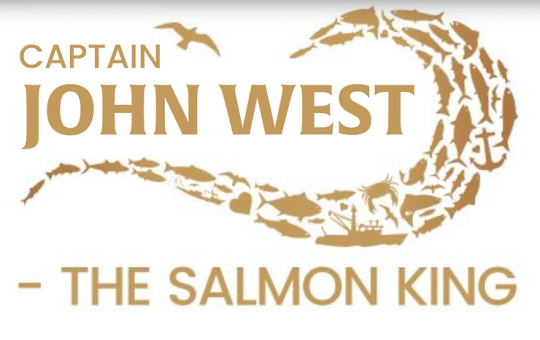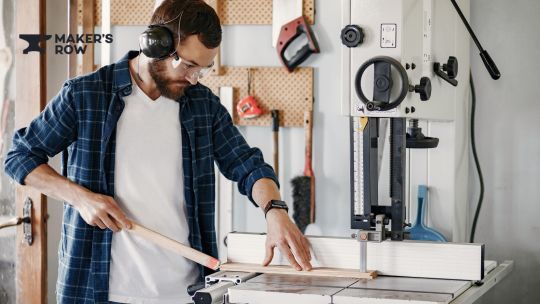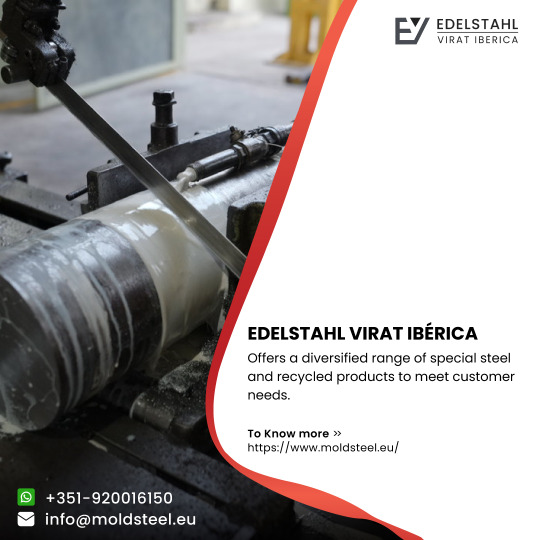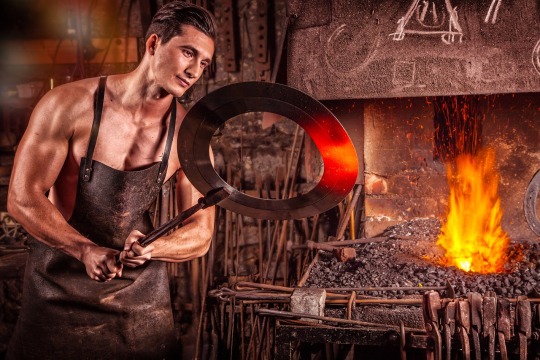#USA industrial machinery
Text
COVERINGS 2024, Tiles and Stone Expo in USA, Ceramic Exhibition, Ceramic India

COVERINGS 2024, Tiles and Stone Expo in USA, Ceramic Exhibition, Ceramic India
Join Us at the Georgia World Congress Center in Atlanta, USA,
April 22-25, 2024
#coverings2024#coverings#USA#Atlanta#America#tiles#stone#ceramic#exhibition#international#expo#world#raw#materials#building#construction#bricks#industry#machinery#technology#show#b2b#trade#fair#suppliers#sanitarywares#india#morbi#gujarat
0 notes
Text











TYPHON STOMP Skid-Steer Loader – Successful Projects at A Mini Scale
#heavyequipment#construction#industrial#skidsteer#farming#usa#machinery#skidsteerloader#typhon#constructionsite#america#contractor#miniexcavator
0 notes
Note
Couldnt it be argued that the US is still a slave republic? Domestically, there is slave labor through the prison system, human and labor trafficking, and only a few decades ago, if at that, systems such as convict leasing, share cropping, and debt peonage. Internationally, there is also the fact that for conflict minerals, coffee, chocolate, and other commodities, a portion if not the majority of it is sourced from slave labor.
The use of slavery in and of itself doesn't constitute the slave-society stage of production. Slavery continues to exist under feudalism and capitalism, but not as the driving force of society as in the ancient slave republics. Politically, in the modern USA, it is the bourgeoisie that are in power; and economically, it is the exploitation of waged labour (much of it overseas) that is the basis of production.
Further, slaves in the US are owned either by the state, in state prisons, and leased to private companies; or owned by large companies directly in private prisons. The individual or smallholder ownership of slaves was done away with in the USA's previous civil war: carried out between the industrial haute-bourgeois of the developed north, and the agricultural petty gentry of the southern hinterland. Slaves in the US today are the exclusive property of the bourgeoisie, through their corporations or bourgeois state.
While large amounts of raw materials are sourced through slave labour, as are agricultural goods, slave labour in the broadest sense is not applicable to industrial production of the type required by modern capitalism - if for nothing else than reasons of profitability. The slave labourer is effectively themselves human capital, part of the machinery bought wholesale - while they still effectively carry out labour, they fundamentally do not produce surplus value in the same manner as a wage-worker; it is necessary for their food and other reproductive labour to be given to them without cost, in the same way one carries out maintenance on equipment - whereas a wage-worker is only purchased and employed as capital for the duration of the workday, and then is responsible for their own food, housing, and reproductive labour. The principal exception to the use of slave labour in industrial production (which already has an exceedingly high fixed-capital cost compared to agriculture) is in the historical case of fascism, where primitive accumulation and war industry led to conditions favourable to industrial slave labour, which was carried out en-masse by e.g. German industrial syndicates using concentration camp labourers.
While the earlier USA, as a settler nation, made heavy use of both slavery and primitive accumulation, this was necessarily a historically-contingent process, one carried out by the European empires precisely because the Americas had not been 'brought up to' the level of social contradiction they had. Slavery's profitability necessarily fell as the USA industrialised, and remains now only in certain key industries like agriculture and military production. Historically, again, the movement to make slavery a profitable general venture in the era of capitalism is the fascist movement, which attempts generally to replace the proletariat at large by mobilising the higher strata upwards, into petty-bourgeois smallholders (e.g. wehrbauern), converting the middle strata into slaves, and exterminating the lower strata - a movement that fundamentally requires both large swathes of cleared land as well as mass depopulation, due to the lower population density such an essentially backwards mode of production can support. Ultimately, it is a project doomed to failure, due to the impossibility of turning back history - but one the bourgeoisie are inevitably driven to attempt when capitalism starts nearing the end of its profitability.
In the USA, historically, the exploitation of indigenous nations and external colonies has provided a source of profit and primitive accumulation that has rendered a genuine fascist movement effectively unnecessary, despite the middle-class yearning for it, but these systems are themselves drying up, and the US, while not a slave republic, will soon start attempting to fashion itself into one by carving up its population.
I hope this has answered your question, thank you for writing in!
171 notes
·
View notes
Text
On the Skidelsky/Fuller post I reblogged, I absolutely welcome automation given the following criteria:
1. The output is identical or, holistically, more positive than human labor output
2. This automation occurs within an economic system in which GDP growth (or similarly fraught metrics) is not the primary objective
3. The automation aids the sustainability of nature and humanity
The USA's agriculture industry is a wonderful example of modern automation failing all three of these criteria. Throughout the entire industrial revolution, agriculture has trended away from being a society-wide confederation of family/community-scale, labor-intensive smallholdings to our current reality of a small number of monolithic industrial farms that are maintained by astoundingly few people who operate increasingly complex and expensive equipment.
Our massive-scale industrial farms are fantastic at what they were designed for; they grow as much of a staple crop as possible without regard to human or environmental health, doing so using minimal labor. Fundamentally, it is an extractive industry. Fossil fuels are extracted to power the machinery, processing, and logistics systems. Nutrients are extracted from the soil to the point that crop growth can only be sustained with heavy amounts of industrial fertilizer input. Entire ecosystems are sacrificed when forests are cleared to be exploited and repeatedly battered with pesticides. This is all primarily to produce soybeans, feed corn, and cotton to then process into products like factory farm livestock feed-slurry, corn syrup, junk food, and sweatshop garments. Secondarily, it is to produce flavorless, nutrition-void produce that can be sold year-round. Consistency is the goal, although one may find that nature itself is curiously inconsistent.
This case study of automation's failings can be traced back to a few major factors:
1. Old-style agriculture work is disagreeable to the USA's perverted fascination for infinite GDP growth; each farm laborer that can be replaced by a machine is a potential worker that could move into a city (or suburb) and put in the same amount of hours at a higher-dollar job. It's just opportunity cost, and this is more-or-less what Skidelsky and Fuller find offensive about our current labor zeitgeist; instead of the now-jobless laborers being free to pursue their interests, they are instead shoehorned into some shitty desk job that produces a relatively greater amount of money to be leeched by executives and shareholders -- this is "more productive" to our economy on the basis of GDP growth and thus must be prioritized over agricultural labor.
2. Industrial approaches to large-scale agriculture are inherently reductive to an extreme extent. Nature is far more complex than Liebig or any other enlightenment thinker ever imagined. Industrialization is great at making cars or computer chips or Gucci jackets or whatever, as these are things that can be standardized with relative ease. Nature cannot be tamed and standardized in a similar way; ecosystems, particularly soil ecosystems, can vary massively even in small areas of the same climate type. Our agriculture systems cope with this simply by ignoring such factors and reducing crop growth to a formula. In X region, plant Y variety of Z crop on A date and apply a regimen of B-type fertilizer and C-type pesticide on D date etc etc. This is the most egregious reduction of something in all of history.
Liebig's reduction of agriculture to the NPK model, just three elements, is good for achieving the singular goal of making your plant of choice come out of the ground, but it ignores all the nuance of soil, climate, and evolution. The other factors don't matter. Modern lab-designed fertilizers often feature a plethora of additional micronutrients, but the goal is still to produce a healthy crop, not healthy soil. Soil itself is an organism, it is something that must be nurtured to be healthy; industrial pesticide/fertilizer regimens are to the soil as feed slurry/antibiotic regimens are to factory farm animals.
Natural processes are, itself, the greatest form of automation for agriculture. Plants and animals that are native to a region have evolved to grow there regardless of human intervention. It is our disruption of these processes that forces agriculture to be labor/resource-intensive. This isn't to say that everyone must immediately abandon all non-native foods and adopt a primarily undomesticated Ötzi diet, but instead, it's worth considering that the complexity of modern technology is not even close to being at parity with the complexity of nature; nature has a several billion year head start. There is no way to flawlessly "tame" it with technological solutions, but a comfortable middle ground can certainly be found.
If sustainable, climate-friendly food production is the primary objective of agriculture, this is far more easily achieved by small, ecology-considerate farms than massive, largely automated industrial farms. A healthy soil ecosystem will aid in growth, flavor, nutrition, and, (quite importantly) carbon sequestration. Broadforking, shoveling, and wheelbarrow-pushing is absolutely more labor intensive than sitting back in a huge John Deere tractor with GPS-based autopiloting features, but the extra labor can turn a woefully extractive process into one that is instead highly regenerative.
20 notes
·
View notes
Text

Frozen Through the Years
Yearly Spotlight: 2019
Written by @toriofthetrees
After six long years, 2019 saw the release of the long-anticipated sequel, Frozen II.
The lead-up up to the release was intense to say the least.
The first teaser trailer premiered in February, opening with Elsa on a black-sand beach stripped down to her bare essentials, barefoot, ready to take on a raging sea. She attempted twice to cross the torrential waters before the trailer turned to Anna’s shock of hundreds of diamond-shaped glass covered in strange symbols, taking over Arendelle. Following closely behind were several moments of Elsa, Olaf, Kristoff, and Anna taking on dangerous challenges, and a show of strange, foreign magic. All of this was centered around this new, mysterious setting known only at the time as an autumnal forest.
It gave just enough of a preview to hook millions.
The trailer was viewed and downloaded several million times on Twitter and YouTube within a short amount of time. In the fandom, a storm of news, posts, speculation, and discussions broke out over several platforms, too chaotic to keep track of. The months that followed the teaser were absolutely brimming with excitement! Across cinemas, television, and the internet—both in the US and internationally—came many trailers, sneak peaks, and posters about the upcoming movie. Alongside this came leaks as well, all of it sparking speculation in the fandom over what the plot of the movie could be.
Countless books about Frozen II came onto the market before the film was even released, notably without the end of the film printed within their pages. This lead to fans in many locations to protest the shops selling these books, wanting their money back.
Most of these protests lead to no results.
Success for Disney Studios, specifically. contributed to the exposure for Frozen II.
~In March, Disney invested billions of US dollars in company acquisitions across the film and TV industry, creating the most powerful media company in the world in the USA.
~This was the year of the 6th Disney D23 Expo, the biggest Disney fan event of the year! It was held on August 23–25 at the Anaheim Convention Center in California, showcasing news and pictures around all the new Disney parks, resorts—and movies! Including Frozen II!
~On November 12, 2019, Disney launched its streaming platform Disney+ in several countries
~2019 ultimately proved to be Disney's most successful cinema year to date, regardless of which new film was released!
All of this led up to the release of Frozen II on November 20, 2019 in most countries (unfortunately some countries had to wait until the beginning of January).
This new installment to Elsa and Anna’s story saw the sisters and their found family making a long trek away from Arendelle… in order to save it. Mysterious magics send them up north to the Enchanted Forest, that is covered in an impenetrable mist. Yet, it parts for them. The deeper they go into the forest, the more they discover about themselves, their family, the spirits, Arendelle… so that only one thing can be said for certain: Nothing will ever be the same again.
This film was polarizing.
In the cultural zeitgeist, it was a massive success like its predecessor, exceeding Frozen as the highest grossing animated film of all time. It received mostly positive reviews and it would go on to be nominated for multiple awards, including an Oscar nomination for Best Original Song. The Disney merchandising machinery was running at full speed and earned the company many more millions within a short amount of time. The limited edition dolls were sold out on the same day as release! However, it notably did not have the same cultural reach that its predecessor had. “Into the Unknown,” to many, was not comparable to “Let it Go.” And the film was nominated aplenty, but never actually received any awards.
However, it was within the fandom that this polarization was seen the clearest.
Frozen II made good on its promise that nothing would ever be the same for these characters. The sisters, though still as close as ever, no longer lived under the same roof by the end of the film. Elsa abdicated her crown for her duties as the Fifth Spirit and Guardian of the Enchanted Forest, while Anna took over as Queen of Arendelle. This separation, whilst to some was a step-up for the sisters, others saw as a step back. This debate rages in the fandom to this day, and many, many fans on Tumblr, Reddit, and other social media prefer Frozen to its sequel.
The fandom did gain some new content, including the addition of multiple ships. There were two that were rather popular. The first was Agduna (Agnarr/Iduna), which came about because of the major focus Frozen II had on them, the sisters’ parents. The second was Elsamaren (Elsa/Honeymaren), which came about because Honeymaren had a minor, but important interaction with Elsa in the film that sent her on the right path to Ahtohallan.
Just as Frozen II’s main theme—change—impacted the sisters, so to it did the fandom. The polarizing effect of the film lead to quite passionate arguments over its content. However, the fandom did not get any smaller or lose any passion. People continued to create, debate, discuss, and post about Frozen and Frozen II. In interviews, the cast and crew said that Frozen II was made to grow up with the audience who were there when the first film was released in theaters. With that in mind, the fandom no longer looked like it did when Frozen first came out.
Things change.
But we can still all agree on one thing:
We love Frozen 💕
Stay Tuned For More
👆🏻 Click above if you want to celebrate the 10th Anniversary of Frozen. The due date is April 12, 2024.
We look forward to seeing your memories ❄️
#frozen#frozen10#frozen 2#anna#sven#elsa#olaf#olaf's frozen adventure#ofa#water has memory#frozen fever#frozen 10th anniversary#for you#fyp#tumblr fyp#yearly spotlight
34 notes
·
View notes
Text






On August 27th 1808 John West was born in Linlithgow.
John West canned fish products are known world wide, but how many people know that the founder of the company was born in Linlithgow?
That at least is the claim made by the company itself - and one echoed in many website entries.
His birthdate is given as the 27th August 1809 but actually tracking down his birth records is proving very difficult. An entry in the Daily Mail in October 2015 states, “The original John West was born in Linlithgow, Scotland, in 1809. After working in the fishing industry in Scotland, he emigrated to the USA where he pioneered the canning of fish.” The John West Company’s own website states that “he cut his teeth in the local Scottish fishing trade”.
So, if he was involved with fishing was he born in a coastal town in Linlithgowshire? Another entry in Wikipedia suggests that he had training as a millwright so was he born on a farm – perhaps, it has been suggested, in the vicinity of Ecclesmachan.
No school building existed in that village until the 1830s so did John attend a school in Linlithgow – perhaps the one which stood behind the Burgh Hall?
What is not in dispute is that, at the age of forty, he emigrated to Canada where he married Margaret and set up house near Quebec. He seems to have begun his working life working in a sawmill - perhaps using his mechanical expertise gained while employed in Scotland. The Californian Gold Rush of the late 1840s saw him trying his luck on the American goldfields where, perhaps having no luck with mineral exploration, he operated a sawmill and opened a general store and post office.
In 1853 he moved to the American state of Oregon and took up a 640- acre Land Claim on the Columbia River. He called the community which grew up there, ‘Westport’. Could that be a tribute to his birthplace in Linlithgow?
He used his entrepreneurial skills to set up a sawmill from which he exported timber to Australia. As a side-line, he also began exporting salmon which migrated up the Columbia River in their thousands. Initially, the fish were salted, packed in barrels and shipped to California from where they were transported to Great Britain.
In the late 1860s he set up his first canning plant – an operation which, by 1873, was producing 22,000 cases of salmon yearly. Using his technical expertise, he invented an automated can-filling machine and a process for turning salmon waste into oil and fishmeal.
During the period when salmon were not so plentiful his machinery was used to can beef, mutton and brambles. By 1882, thirty-nine of his factories were in operation. Some 1700 fishing boats supplied the products he required.
In 1882, he commissioned a 118-foot propeller-driven steamer which he, rather egotistically, called the “John West”. Captain West, as he liked to be called, died in 1888 a very wealthy man.
The company continued under the name “John West” but in the 1920s it was taken over by Unilever. In 1997 it was bought by Heinz who sold it to French-based MW Foods who in turn passed it on to the Thailand based Thai Foods Group. Further research may come up with more details of John West’s birth and upbringing in, or near, Linlithgow. Meanwhile we can but admire the story of a another Scot who became a household name across the world.
7 notes
·
View notes
Text
Sustainable Furniture Manufacturing in the USA

In today’s world, sustainability is not just a trend but a necessity, especially in industries like furniture manufacturing. As consumers become more conscious of their environmental impact, the demand for sustainable furniture has surged. This shift has prompted many U.S. manufacturers to adopt eco-friendly practices, ensuring that the furniture industry contributes positively to the planet.
Why Sustainability Matters in Furniture Manufacturing
Sustainable furniture manufacturing is about creating products that minimize environmental impact throughout their lifecycle. This includes using responsibly sourced materials, reducing waste, and ensuring that production processes are energy-efficient. The benefits of sustainable manufacturing are manifold:
Environmental Protection: Sustainable practices help in reducing deforestation, pollution, and carbon emissions.
Consumer Demand: There is a growing market for eco-friendly products, with many consumers willing to pay a premium for sustainably produced furniture.
Regulatory Compliance: Many U.S. states have introduced regulations that encourage or even mandate sustainable practices.

Key Trends in Sustainable Furniture Manufacturing
Several trends are shaping the future of sustainable furniture manufacturing in the U.S.:
Use of Recycled and Reclaimed Materials: Manufacturers are increasingly using recycled wood, metal, and textiles to reduce reliance on virgin materials. This not only conserves natural resources but also reduces waste.
Energy-Efficient Production: Many companies are investing in energy-efficient machinery and renewable energy sources like solar and wind power to reduce their carbon footprint.
Circular Economy Models: The circular economy is gaining traction, where furniture is designed to be reused, refurbished, or recycled at the end of its life, reducing waste and conserving resources.
Non-Toxic Finishes: There is a shift towards using non-toxic paints, stains, and finishes that do not emit harmful VOCs (volatile organic compounds), making furniture safer for both consumers and the environment.
Case Study: Sustainable Success
Let’s take the example of a small furniture company that partnered with a local manufacturer through Maker’s Row. By using reclaimed wood and non-toxic finishes, they were able to produce a line of eco-friendly furniture that resonated with their target market. Not only did they reduce their environmental impact, but they also saw a significant increase in sales, proving that sustainability is good for both the planet and business.
The Future of Sustainable Furniture Manufacturing
The future of sustainable furniture manufacturing in the U.S. looks promising. With ongoing innovations and a growing commitment to eco-friendly practices, the industry is well-positioned to meet the demands of conscious consumers. By prioritizing sustainability, U.S. manufacturers can lead the way in creating a greener future.
Sustainable furniture manufacturing is not just about producing beautiful, functional products. It’s about making choices that protect the environment and meet the evolving needs of consumers. By partnering with platforms like Maker’s Row, businesses can find the right manufacturers to create furniture that is both stylish and sustainable.
#manufacture#manufacturer#usa#business#USA Business#livingroom#furniture#decor#home decor#decoration#ecofriendly#makersrow#aesthetic
4 notes
·
View notes
Text

Intro: EDELSTAHL VIRAT IBERICA in #portugal
An emerging importer Exporter, Supplier & Stockiest of Tool steel, Die & Mold Steels, Recycling products etc.
Tool Steel & Mold Steel Products:
https://moldsteel.eu/steel-products/
🏆PLASTIC MOLD STEELS (DIN 2738, 2311 ) – Low / High Hard
🏆HOT WORK STEELS (DIN 1.2714, 2343, 2344)
🏆COLD WORK STEELS (DIN 2379, 2080)
🏆HIGH SPEED STEELS (DIN 3243, 3343, 3355)
🏆CHIPPER KNIFE STEEL (DIN 2631)
🏆ALLOY STEELS, BRIGHT BARS, EN-SERIES ETC.
Scrap / Recycling Products:
https://moldsteel.eu/recycling-products/
👉 Used Tools(Carbide, Threading & HSS Cutting Tool Scrap)
👉Die & Mold Steel Blocks, Holder etc.
👉Steel lots, Cut short length, Prime over run
👉2344 Used Mandrel Bars
👉2344 Used Extrusion Dies
👉Forging Dies
👉Electric Motors
👉Used Machineries etc.
We are also involved in trading of Ferrous, Non Ferrous, Alloy steel scrap etc. The dynamic management has enabled the company to grow organically and sustainably in its search for Moving ahead globally with the exploration of Business Opportunities in several nations, including the USA, Canada, Europe, Australia, Middle East, Singapore, Japan, South Korea, India, and Philippines, etc.
Our business scope in B2B and B2C at many stages (finish products, scrap and recycling products, etc.), set us apart from other companies in this sector.
We work with a wide range of industries, including those related to Drop Forging, Aluminum Extrusion, Automotive, Mining, PDC, Power Generation, Petrochemical, Aviation, Railways, Agricultural, Oil and Gas, Drilling, Hand Tools, Bulk Material Handling, etc.
New Development in Special Steels, Recycled Products and Machine tools etc.
TO LEARN MORE >>
https://moldsteel.eu/
WhatsApp Chat: +351-920016150
Email: [email protected]
#europe#porto#portugal#din2738#edelstashlviratibrica#viratsteels#b2b#oportunidades#empresas#agricultura#din2714#din2343#din2344#din2379
3 notes
·
View notes
Text
Global top 13 companies accounted for 66% of Total Frozen Spring Roll market(qyresearch, 2021)
The table below details the Discrete Manufacturing ERP revenue and market share of major players, from 2016 to 2021. The data for 2021 is an estimate, based on the historical figures and the data we interviewed this year.
Major players in the market are identified through secondary research and their market revenues are determined through primary and secondary research. Secondary research includes the research of the annual financial reports of the top companies; while primary research includes extensive interviews of key opinion leaders and industry experts such as experienced front-line staffs, directors, CEOs and marketing executives. The percentage splits, market shares, growth rates and breakdowns of the product markets are determined through secondary sources and verified through the primary sources.
According to the new market research report “Global Discrete Manufacturing ERP Market Report 2023-2029”, published by QYResearch, the global Discrete Manufacturing ERP market size is projected to reach USD 9.78 billion by 2029, at a CAGR of 10.6% during the forecast period.
Figure. Global Frozen Spring Roll Market Size (US$ Mn), 2018-2029

Figure. Global Frozen Spring Roll Top 13 Players Ranking and Market Share(Based on data of 2021, Continually updated)

The global key manufacturers of Discrete Manufacturing ERP include Visibility, Global Shop Solutions, SYSPRO, ECi Software Solutions, abas Software AG, IFS AB, QAD Inc, Infor, abas Software AG, ECi Software Solutions, etc. In 2021, the global top five players had a share approximately 66.0% in terms of revenue.
About QYResearch
QYResearch founded in California, USA in 2007.It is a leading global market research and consulting company. With over 16 years’ experience and professional research team in various cities over the world QY Research focuses on management consulting, database and seminar services, IPO consulting, industry chain research and customized research to help our clients in providing non-linear revenue model and make them successful. We are globally recognized for our expansive portfolio of services, good corporate citizenship, and our strong commitment to sustainability. Up to now, we have cooperated with more than 60,000 clients across five continents. Let’s work closely with you and build a bold and better future.
QYResearch is a world-renowned large-scale consulting company. The industry covers various high-tech industry chain market segments, spanning the semiconductor industry chain (semiconductor equipment and parts, semiconductor materials, ICs, Foundry, packaging and testing, discrete devices, sensors, optoelectronic devices), photovoltaic industry chain (equipment, cells, modules, auxiliary material brackets, inverters, power station terminals), new energy automobile industry chain (batteries and materials, auto parts, batteries, motors, electronic control, automotive semiconductors, etc.), communication industry chain (communication system equipment, terminal equipment, electronic components, RF front-end, optical modules, 4G/5G/6G, broadband, IoT, digital economy, AI), advanced materials industry Chain (metal materials, polymer materials, ceramic materials, nano materials, etc.), machinery manufacturing industry chain (CNC machine tools, construction machinery, electrical machinery, 3C automation, industrial robots, lasers, industrial control, drones), food, beverages and pharmaceuticals, medical equipment, agriculture, etc.
2 notes
·
View notes
Note
What is it like living in Blackwatch?
It sucks! You're either in a rich snobby neighborhood or you're in the slums. Blackwatch is so heavily militarized that they put most of their government budget into defense and weaponry, and it's primarily controlled by the wealthy 1%. Most people who live there don't want to, but they really can't afford to leave.
It's like urban USA if it was worse. They tout freedom and industrial power, but the truth is Blackwatch has the worst quality of life of all countries in SRC. Which sucks, because it's one of the best places to get dragonsteel and go to college for industry! Piquet was trained there, and he really did not like the people, but he did learn an insane amount about modern machinery.
Blackwatch has the lowest amount of ambient mana in all of SRC and this has been proven to have adverse health effects on the people who spend a large amount of time in there. It's so low that it's nearly considered a dead zone, an area with absolutely zero ambient mana, which is known to be draining on those within them.
It also smells terrible. Like rotten eggs, all the time, everywhere. Most people who live there have become pretty nose blind to it, but the smell is so bad that many people visiting Blackwatch might gag or even vomit upon first getting a whiff of it. Not to mention the heat- Blackwatch has the highest ambient temperature in all of Cier, even higher than the literal desert north of them, due to all the heat-containing pavement and metal buildings. Summer days can get worse than Death Valley [over 140°F!], which would be deadly to a human; thankfully, stickfigures are much more resilient to hot temperatures.
TLDR, the motto for for visiting Blackwatch is that you just don't, unless you're willing to push through all the bad shit about it.
But hey, at least it has the most competitive combat robotics scene in all of Cier, if you're into that sort of thing.
9 notes
·
View notes
Text
COVERINGS 2024, Tiles and Stone Expo in USA, Ceramic Exhibition, Ceramic India

COVERINGS 2024, Tiles and Stone Expo in USA, Ceramic Exhibition, Ceramic India
Join Us at the Georgia World Congress Center in Atlanta, USA,
April 22-25, 2024
#coverings2024#coverings#USA#Atlanta#America#tiles#stone#ceramic#exhibition#international#expo#world#raw#materials#building#construction#bricks#industry#machinery#technology#show#b2b#trade#fair#suppliers#sanitarywares#india#morbi#gujarat
0 notes
Video
youtube
🎁BEST INFRASTRUCTURE PUBLIC DESIGNS IN 2024'S OF AMERICANS FAMILY LEADER...
#infrastructure #architecture #architecturelovers #architectural #architecturedesign #design #designs #construction #constructionequipment #constructionindustry #constructionlife #constructionproject #project #projects #industry #industrynews #industryleaders #interiordesign #interior #exterior #exteriordesign #goverment #govermentjob #governor #realestate #realestateagent #realestateinvesting #realestatetips #realestateinvestor #realestatelife #realestateinvestment #realestatemarket #realestateadvice #stockmarket #stocks #stockmarketlive #stockmarketnews #stockmarketinvesting #stockmarketeducation #stocktrading #exchange #trade #trading #tradingstrategy #tradingtips #marketing #investing #investment #investmentproperty #realestatemarketing #businessnews #business #businessleadership #businessowner #entrepreneur #entrepreneurship #influencer #influencermarketing #building #wonder #worldwonders #destination #home #homemade #homedecor #homedesign #equipment #machine #machinery #medicaldevice #medical #house #modelhouse #model #homeworkout #workout #fitness #sportscars #sportbike #sports #sport #cardesign #modelcars #cruise #cruiseship #cruiseblogger #airplane #airlines #airlinesnews #airways #worldnews #worldnewstoday #world #worldwide #knowlege #property #properties #propertyinvestment #propertymanagement #propertymarket #online #onlinestore #onlinebusiness #onlineshopping #shopping #shoppingvlog #tv #tvnews #tv9 #tvshow #tv9newslive #tvnet #tvnetwork #local #localnews #localbusiness #localnewstoday #localmatch #policy #fairplay #justice #equality #humanrights #copyrights #copyright #legal #legacy #legaladvice #legaleducation #legalnews #legalknowlege #worldknowlege #worldknowlegetv #global #amazon #apple #yahoo #yahoofinance #yahoonews #bloomberg #washingtonpost #newyorktimes #vogue #magazine #magazin #latimes #forbes #peoplemagazine #people #public #publicnews #publictv #adventure #ad #reels #reelfb #reelsinstagram #vlog #blogger #life #lifestyle #lifestylevlog #lifehacks #lifequotes #lifechanging #lifemotivation #family #familyvlog #peoplevlogs #peopleblogs #designlovers #pattern #patterndesign #professional #leadership #leader #leadershipdevelopement #CEO #ceomindset #industrial #industrialdesign #industrialtechniques #digitalart #digitaldrawing #digitalmarketingagency #digitalartist #digital #digitalmarketing #digitalnews #media #mediaonenews #medianews #socialmedia #social #socialmediamarketing #socialnews #socialjustice #socialexperiment #socialmediatips #socialwork #socialscience #socialnetwork #networkmarketing #network #networking #civilrights #civilengineering #civil #civilservices #civilization #tech #technology #technews #texas #texasnews #texasrealestate #texasholdem #texasliving #road #roadtrip #bridge #austin #austintexas #austinnews #houston #houstontexas #houstontexans #houstonastrosnews #houstonnews #dallas #dallastexas #dallastx #fortworth #fortworthrealestate #dallasfortworth #elpaso #elpasotx #elpasorealestate #sanantonio #sanantonioblogger #abcnews #nbc #nbcnews #bbc #bbcnews #cbs #cbsnews #cbs_broadcasting #cbsnews #foxnews #cnn #cnnbrasil #cnnnews #usa #america #americavlog #usavlogs #unitedstates #americanews #americatv #insurance #credit #stockexchange #highlight #quality #standard #runningmachine #hollywoodnews #geniusnews #skills #production #productionhouse #manufacturing #finance #finances #financenews #celebritynews #musicindustrynews #filmindustrynews #science #education #educational #maintenance #service #engineering #engine #engineer #qualityeducation #qualityassurance #qualitytime #giveaway #craft #collection #list #series #measurement #influencer #influencermarketing #investmentnews #homesweethome #apartment #law #rules #statement #capital #capitaltv #capitalnews #subcribe #suburban #metro #metropolitan #metrotv #city #citynews #channel #24news #onlinenews #topnews #congress #congressional #technical #structure #sculpture #career #job #selfcare #healthcare #senate #resident #citizen #citizentv #citiesskylines #vehicle #transport #transportation #portal
3 notes
·
View notes
Text
Top Measuring Instruments Supplier in India

A Legacy of Excellence
Kristeel’s journey began in 1973 with a simple yet powerful goal — to provide top-notch Precision Measuring instruments, engineering gauges, and tools. But their story doesn’t stop there. Over the years, they’ve expanded their horizons into manufacturing photochemical machined parts, press parts, wave solder pallets, SMT stencils, and textile machinery. Today, Kristeel calls Mumbai home and operates advanced manufacturing facilities in Mumbai, Bangalore, and Silvassa.
Crafting Precision:
What sets Kristeel apart is their unwavering dedication to precision. They’ve achieved this through investments in cutting-edge technology. At their manufacturing setups, you’ll find top-of-the-line plant and equipment imported from the USA, Italy, and Germany. This investment not only ensures accuracy but also results in cost savings.
Quality as a Way of Life:
Kristeel’s commitment to international quality standards is what keeps them at the top of their game. They aim for ‘zero’ defects and follow Total Quality Management (TQM) methods, leaving no room for error. To maintain quality at every stage, they employ a stringent Statistical Process Control System (SPCS).
International Recognition:
Kristeel’s dedication to quality has earned them recognition from the European Economic Community (EEC). Their precision measuring rules meet Class-I and II standards. Additionally, they proudly hold ISO 9001 certification from the TUV group in Süd Deutschland, Germany, and are actively implementing 6 Sigma Management practices.
Research & Development:
Kristeel’s journey is marked by their relentless pursuit of excellence through robust research and development. They continually enhance quality control, inspection processes, and machinery to remain the preferred choice in India and globally.
Supporting ‘Make in India’:
In line with the ‘Make in India’ initiative, Kristeel is setting up research and development units for textile machining and Vernier caliper tools within India, promoting domestic manufacturing.
Technology and Innovations:
Kristeel believes in staying at the forefront by investing in the latest technology and machinery upgrades. They’ve partnered with international leaders in their respective fields from Japan, the USA, Singapore, Italy, and more.
Global Reach, Local Connection:
Kristeel’s growth is a result of its sustainable development and inclusive growth approach. Their extensive network spans over 3600 customer touchpoints, including authorized dealerships, instrument and tool outlets, and dealer-appointed outlets across the country.
Conclusion
In conclusion, Kristeel’s journey as a Leading measuring instrument and precision tool manufacturer is characterized by their unwavering commitment to quality, dedication to innovation, and adoption of technological advancements. With a legacy of almost five decades, Kristeel continues to shape the industry, support domestic manufacturing, and contribute to India’s ‘Make in India’ initiative. Their impressive track record, international certifications, and extensive distribution network make Kristeel a trusted source for precision engineering. Whether you’re a professional in the industry or an enthusiast, Kristeel has something to offer for everyone who values precision and quality.
2 notes
·
View notes
Text
Bellow Seal Safety Valve manufacturer in USA
SVR Global is the best Bellow seal safety valve manufacturer in USA supplying superior quality valves to petrochemical industries, oil industries and chemical industries in Baltimore, Seattle and Des Moines.It's main work is to discharge extra pressure from a system when it rises above a set limit. By doing so, potential safety risks and equipment damage are reduced. The bellows is a pliable, accordion-like component of the valve. It can expand or contract to maintain a tight seal up until the predetermined pressure is attained since it is sensitive to variations in pressure.Safety valves with a bellows seal are known for being able to maintain a tight seal even at low pressure levels. This qualifies them for uses where leak protection is crucial. When maintaining a sterile or clean environment is crucial, these valves are frequently employed in the petrochemical, pharmaceutical, food processing, and aerospace industries.A bellows seal safety valve's set pressure can be changed to suit the particular needs of the application. When the system's pressure rises over this threshold, the valve opens to let the extra pressure out.It is a particular kind of safety valve used in many sectors to safeguard machinery and processes from overpressure situations is the bellows seal safety valve. These valves have a bellows-like feature that helps maintain a seal, ensuring the valve stays leak-tight until it reaches a certain set pressure.
TYPES
Spring-loaded bellow seal safety valves
Pilot-operated bellow seal safety valves
Balanced bellow seal safety valves
Bellow seal relief valves
Vacuum relief bellow seal valves
INDUSTRIES
•oil and gas industries
•Petrochemical industries
•Aerospace industries
•Aircraft hydraulic systems
•Water industries
•Petroleum industries
•Heating boilers
Available materials: Cast Iron and Steel (A216 WCB, WCC, LCB, LCC, WC6, WC9), Ductile Iron, Stainless Steel [SS316, SS304, SS316L, SS904L, CF8, CF8M, F304, F316, F31L, F51, F3, F55, F91], WCB, WC6, SS304, SS316, DUPLEX STEEL.
Ends: Flanged, Buttweld, Socket weld, Threaded
Class: 150 to 2500
Nominal Pressure: PN25 to PN450
Size: 1/2” to 64”
https://svrglobal.net/products/balanced-bellow-seal-safety-valve/
2 notes
·
View notes
Text
Historically, Who Started Sheet Metal Work?

Sheet metalwork is a process that has been around for centuries. In its earliest incarnation, sheet metal was used to create swords and other weapons. Over time, the process evolved, and sheet metal began to be used for other purposes, such as creating roofing materials and ductwork. Today, sheet metal work is essential to many industries, including construction, automotive, and aerospace.
The Earliest Uses of Sheet Metal Work
The first known use of sheet metal dates back to 4000 BC when it was used to create swords in ancient Mesopotamia. Then, around 1000 BC, Chinese metallurgists began using a process known as annealing to make weapons and tools from iron and steel. This process made the metal softer and more pliable, which made it easier to work with.
By the Middle Ages, European blacksmiths had discovered how to make steel, which was even stronger than iron. This new material quickly became famous for making armour and weapons. To make steel, blacksmiths would heat iron until it glowed red hot before dipping it into water or oil. This process, known as quenching, made the steel harder and more durable.
The Industrial Revolution and Beyond
The industrial revolution ushered in a new era for sheet metal work. With the advent of new technologies like the steam engine and the cotton gin, factories began popping up all over Europe and North America. These factories required large amounts of metal for their machinery, which created a demand for sheet metal workers.
With the advent of new technologies like the rolling mill and the steam engine, manufacturers could mass-produce sheet metal much more efficiently than ever before.
As factories sprang up across the continent, so did the demand for skilled workers who could shape and manipulate sheet metal into the needed parts and pieces. These workers became known as “tin bashers,” a term still used today in some parts of the world.
Tin bashers were in high demand throughout the 19th and early 20th centuries as factories continued to churn out an ever-increasing number of products made from sheet metal. However, the rise of automated manufacturing processes in the mid-20th century led to a decline in the demand for manual labour, including tin bashers.
One of the most famous examples of early sheet metal work is the dome of St. Paul’s Cathedral in London, completed in 1708. The dome is made from over 3,000 tons of copper hammered into shape by hand. The Statue of Liberty is another well-known example of early sheet metal work; her outer skin is made from sheets of copper that were heated and bent into shape.
Today, sheet metal work is essential to many industries, including construction, automotive manufacturing, and aerospace engineering. New technologies have led to the development of automated machines that can accurately cut and shape sheet metal. However, there are still many instances where manual labour is required to create a custom piece or achieve a particular look.
Conclusion:
Sheet metal work is a fascinating field with a long and rich history. What started as a way to create swords and other weapons have become an essential part of many industries today. While new technologies have led to the development of automated machines that can cut and shape sheet metal with precision and accuracy, there are still many instances where manual labour is required to create a custom piece or achieve a specific look. Whether used to develop ductwork or the outer skin of an airplane, sheet metal work plays an important role in our world today.
Who are we?
We are an aluminum enthusiast and an aluminum metals supplier in Canada and the USA.
We offer premium, raw & anodized Aluminum sheets, Aluminum nameplates, assorted colour aluminum wire, cold or hot rolled Aluminum Plate, Gold, Black, Silver, and Purple Aluminum Foil and Aluminum Coil for sale in our warehouse, ready to ship today.
Call us today, Toll-Free: 866–860–0652, if you need further information.
Source: Historically, who started sheet metal work? History of Metal Work (aaluminum.com)
3 notes
·
View notes
Text

Intro: EDELSTAHL VIRAT IBERICA in Portugal
An emerging importer Exporter, Supplier & Stockiest of Tool steel, Die & Mold Steels, Recycling products etc.
Tool Steel & Mold Steel Products:
https://moldsteel.eu/steel-products/
🏆PLASTIC MOLD STEELS (DIN 2738, 2311 ) – Low / High Hard
🏆HOT WORK STEELS (DIN 1.2714, 2343, 2344)
🏆COLD WORK STEELS (DIN 2379, 2080)
🏆HIGH SPEED STEELS (DIN 3243, 3343, 3355)
🏆CHIPPER KNIFE STEEL (DIN 2631)
🏆ALLOY STEELS, BRIGHT BARS, EN-SERIES ETC.
Scrap / Recycling Products:
https://moldsteel.eu/recycling-products/
👉 Used Tools(Carbide, Threading & HSS Cutting Tool Scrap)
👉Die & Mold Steel Blocks, Holder etc.
👉Steel lots, Cut short length, Prime over run
👉2344 Used Mandrel Bars
👉2344 Used Extrusion Dies
👉Forging Dies
👉Electric Motors
👉Used Machineries etc.
We are also involved in trading of Ferrous, Non Ferrous, Alloy steel scrap etc. The dynamic management has enabled the company to grow organically and sustainably in its search for Moving ahead globally with the exploration of Business Opportunities in several nations, including the USA, Canada, Europe, Australia, Middle East, Singapore, Japan, South Korea, India, and Philippines, etc.
Our business scope in B2B and B2C at many stages (finish products, scrap and recycling products, etc.), set us apart from other companies in this sector.
We work with a wide range of industries, including those related to Drop Forging, Aluminum Extrusion, Automotive, Mining, PDC, Power Generation, Petrochemical, Aviation, Railways, Agricultural, Oil and Gas, Drilling, Hand Tools, Bulk Material Handling, etc.
New Development in Special Steels, Recycled Products and Machine tools etc.
TO LEARN MORE >>
https://moldsteel.eu/
WhatsApp Chat: +351-920016150
Email: [email protected]
#europe#porto#portugal#din2738#edelstashlviratibrica#viratsteels#b2b#oportunidades#empresas#agricultura#Bolhão#Ribeira#Braga#Guimarães
2 notes
·
View notes